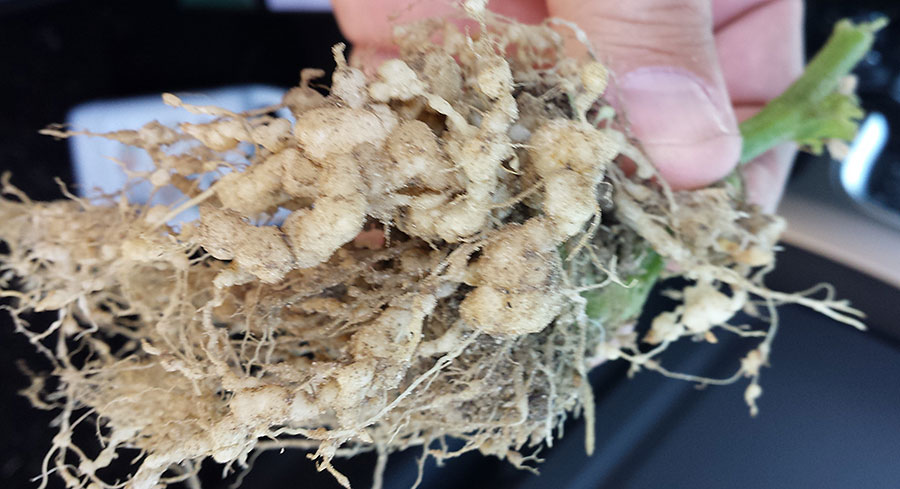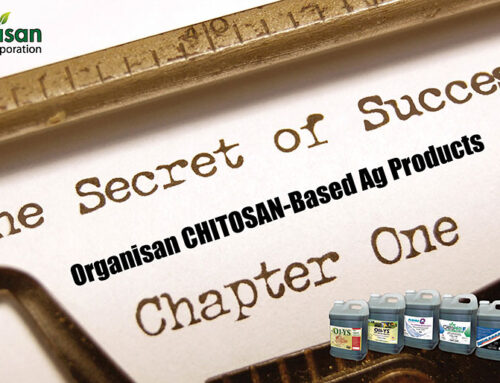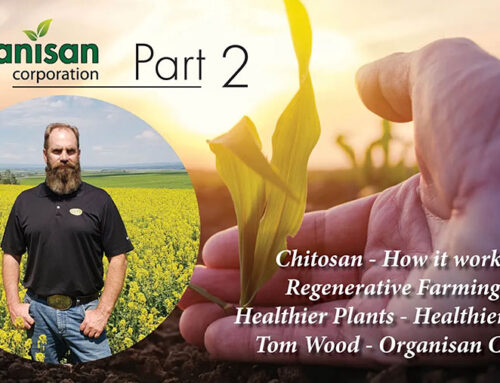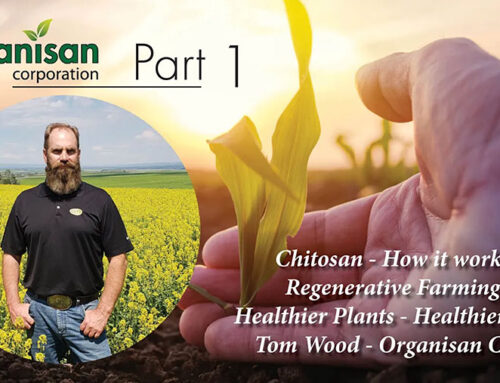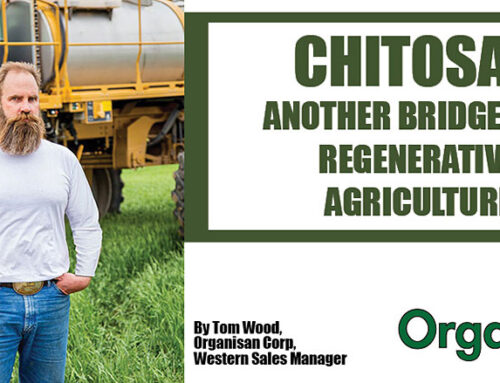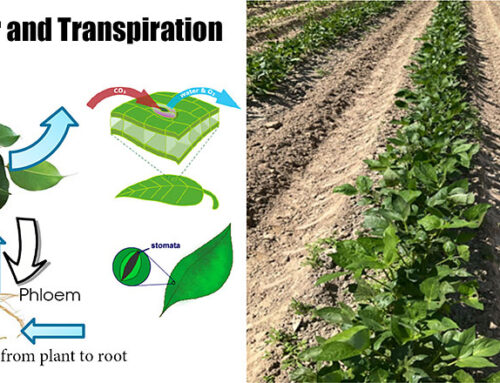I can’t tell you how many panic calls we get each year from farmers that dig up a few plants to learn he has root-knot nematodes present in every corner of his field. Presence of nematodes can be economically devastating. Many farmers invest time in equipment and nutrients and think they have the perfect crop plan, then come to realize that they have been attacked by the number one parasitic nematode. These underground pests are not new to the agricultural world, but it’s still surprising to farmers across the world when they are attacked. Don’t be surprised this year. This is something that can be prevented and if you do find you’ve been attacked, then it’s time you fight back and here’s how.
To better understand nematodes, you must take a visit underground because that’s where the surprises start. The easiest way to know if you are being attacked is to have your soil tested because you if are seeing signs from the surface…it’s too late! The attack has been going on secretly underground from some time and you can bet you have a major problem if you see the first signs above ground. We suggest taking samples as various times of your crop season. This is such a simple and cost-effective way to get key information on your crops. And important to note is, take samples from various points of your field, not just one. A lot of farmers wait until the plants begin to emerge from the soil or halfway through the growing season to dig up a few plants for visual analysis. Let me tell you, at that point, if you can see nematode evidence with the naked eye, you have just allowed your problem to be 100x’s worse!
Overall, we know plants require a clean root system to thrive. If anything gets in the way of the root absorbing the water and nutrients being applied, your plants will suffer. If nematodes are even minimally present, your plants are not receiving their maximum nutrition. The interference will impact overall growth and productivity.
This is not a new problem for farmers, but every year we receive calls of panic when a few plants are extracted and with the naked eye farmers can easily see root knot. To help you prepare for this growing season, we’d like to review some of the basic educational information about nematodes. Hopefully, you’ll test sooner, treat quicker and help your crops stay healthy and nematode free.
The Basics – What is a Nematode?
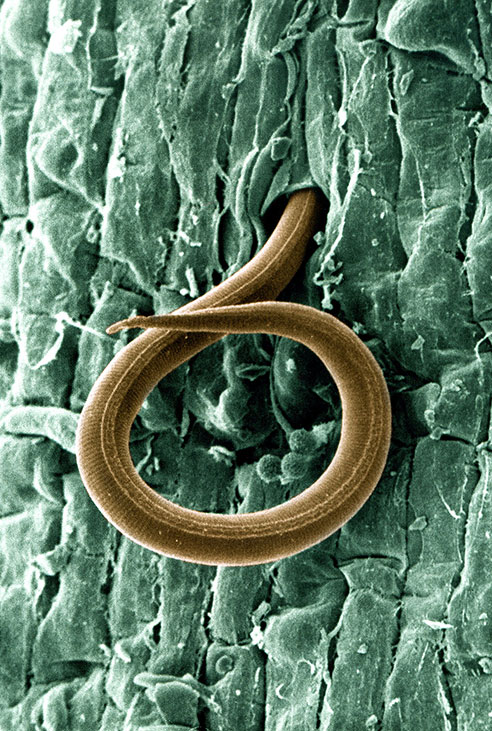 A nematode is a form of roundworm. The category of roundworms is incredibly wide, covering at least 25,000 different species. Some of these species are beneficial to us, some are harmful. There are two basic forms of nematodes, predatory and/or parasitic. That’s right, there are good and bad nematodes and you need to know the difference in order to understand what’s happening in your soil.
A nematode is a form of roundworm. The category of roundworms is incredibly wide, covering at least 25,000 different species. Some of these species are beneficial to us, some are harmful. There are two basic forms of nematodes, predatory and/or parasitic. That’s right, there are good and bad nematodes and you need to know the difference in order to understand what’s happening in your soil.
Predatory nematodes are commonly known as the good worms. It’s like the black snakes of the snake world. While they look harmful, they are great to have around because they help protect your borders from other pests. In the nematode world, predatory nematodes can be beneficial because they can keep our crops pest-free from various insects like cutworms and squish vine borers.
Parasitic nematodes, on the other hand, are the ones that we need to watch out for and those are the ones that will cost you thousands of dollars in damage. Parasitic nematodes are the ones that will destroy a crop and often they are the hardest to notice. Because their action happens underground for such a long period, farmers don’t know what happening until they can see the damage coming through the top of the ground. Often the subsurface signs are stunting of growth, leaves turning yellow or small immature products on mature vines. You really must admire the audacity and speed in which parasitic nematodes attack living plant matter and completely devour it. The greater problem is that many plants have an internal instinct to attacks. Immediately they refocus all their resources to the attack vs. focusing those nutrients to good growth. This can happen for long periods of time before farmers realize what’s happening. It’s extremely important to know what’s going on underground always!
One of the most common parasitic nematodes that we hear about is root knot nematodes. If you notice yellow leaves, stunted growth or your plants look weak, you may have a root knot issue. Once these nematodes invade your plants structure, they break down the barrier of your plants roots and not only is this a problem, but it opens the door for other diseases to just walk right in.
Recently, I read an interesting article on nematode life cycle. This is important to understand because it’s important to know how to treat in each cycle. There is an embryonic stage, several intermediary stages and an adult form.
In the adult stage, the nematode will lay eggs in the root system. Up to a thousand eggs can be laid by one adult. This is one of the main reasons it spreads so quickly and so strongly. In each stage, the root knot nematodes becomes a danger to the plants. As it starts eating its way out of the egg, it already begins to start the damage within the root structure.
Location of Nematodes
Nematodes can be found in the soil and attacking root systems. It is estimated that more than 90 different species are in existence and have been found in everything from food crops to trees to ornamental plants.
The following list is some (but not all) of the plants which can be impacted by root knot nematodes. This list was compiled from a variety of sources including the calls we’ve received from farmers. Alfalfa, almond, apricot, avocado, azalea, barley, bean, cantaloupe, carrot, citrus, corn, cotton, cucumber, eggplant, grapes, hemp, hops, lentil, lettuce, nectarine, okra, olive, onion, pea, peach, peanut, pear, pecan, pepper, pineapple, potato, pumpkin, soybean, squash, strawberry, sunflower, sweet potato, tea, tobacco, tomato, walnut, and watermelon.
And that leads us to what can be done to the million-dollar problem (literally…we are talking millions of dollars are lost each year to these little devils). Our answer…Be Proactive!
It’s no secret that nematodes love all crops. There are numerous preventative treatments on the market, including our EPA registered Nemasan. In order to protect your soil and give your plants the maximum space and nutrients they need to thrive, you must protect against nematodes. In today’s world, the minimum amount of investment in a good nematicide doesn’t begin to equal the economic risk.
Unlike most nematicides, Nemasan can be applied at any time during the growing cycle and with minimal PPE requirements. Learn more by visiting our website and clicking on Products, and then Nemasan. Take care of your plants – they will thank you with great health and wealth this year!
By: Robin Borden, Agronomist

